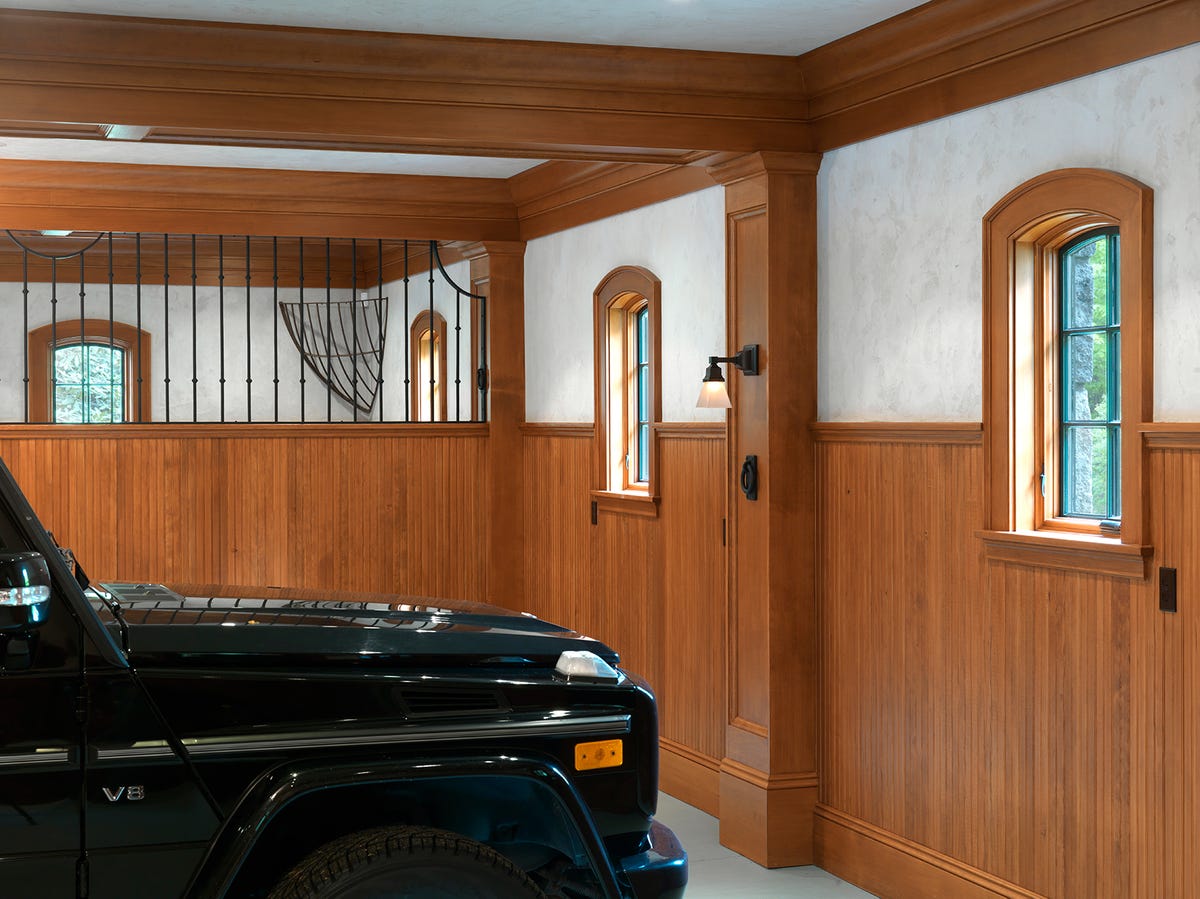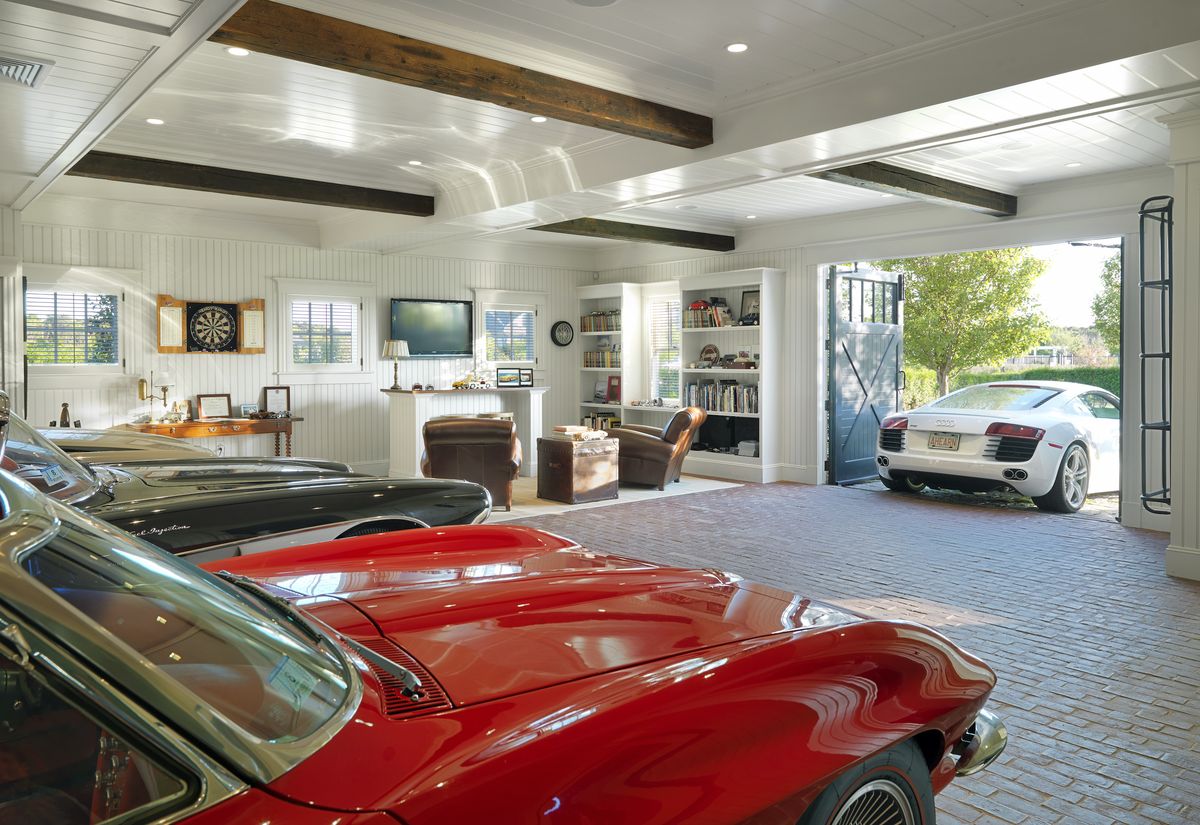Special automobiles demand special shelter from the elements, and while you can dress out your standard-issue two-car attached garage to do the job, collectors really want a space that reflects the depth of their auto-centric lifestyles. That's where the "carriage house" comes into play, making the architecture as artful and inspiring as the contents.
Patrick Ahearn has a booming architectural practice in Boston and Martha's Vineyard, building historic-looking homes in the New England Vernacular style. But one of his sub-specialties has become the construction of elaborate carriage houses. These high-end garages take their inspiration in part from Ahearn's childhood on Long Island, but not from the proto-suburban neighborhood of Levittown in which he grew up—a mass of pre-fab boxes built mainly for the post-war housing boom.

"Our carriage houses tend to be fully tricked-out. Finished walls, bead board, marine varnish mahogany, brick floors, heated, air-conditioned, carriage doors that swing out so there's no hardware in the ceilings," says Ahearn. "They hearken back to the Great Gatsby era, in terms of what you might think of the classic houses on the North Shore of Long Island that would have had these wonderful carriage houses with living space above, usually for the chauffeurs, and garages that would have housed the cars of the time—the big old Packards, Duesenbergs, Auburn Speedsters."
A Multi-Purpose Car Playspace
Ahearn's carriage houses typically serve multiple purposes. They function not only as a means for storing vehicles out of the frequently inclement New England weather, but also as a site for displaying and congregating with them. Ahearn will typically build in features such as a wet-bar, an office, shelving for automotive mementos and memorabilia, and plentiful seating areas for making the car a part of the experience of gathering.

Sometimes, he'll design these spaces even with the idea of the car being removed, so that the building can serve multiple functions. Because his carriage houses are generally situated within a compound, and built to the same high standards, and because they have wide opening doors, they can often be used as entertainment spaces as well. "In the summertime they may not keep the cars there," Ahearn says of his clients. "They may even have a dinner party for 60 people in there. Often times they have doors that open out onto a courtyard or a pool, so they become indoor/outdoor opportunities in the summertime."
Literal Hideaways
The cars' ability to disappear can sometimes be a hallmark of these spaces, with Ahearn creating the capacity for the vehicles to lower down and out of sight on hidden platforms. "I've done ones where they drop down onto a rotating table, so you can move the cars into different slots in a big underground basement," Ahearn says. "I've even done some where the lift drops the car drops down, and then there'll be a finished room in the basement of the house that the carriage house is attached to. There'll be a glass wall that looks out onto like, a billiard room, so you can see whatever car you dropped down from the carriage house from the billiard room."

Because of their high-quality and high-cost finishes, Ahearn's carriage houses tend to be used more for display, and hanging out, and less for actual repairs. Though in the pole barn he built to house his own vehicles, he included a functioning bay. "For myself, I built a big barn with lifts in it and stuff. My son and I built a ‘33 Ford hotrod in that space, with an LS1 Corvette engine."
Ahearn's personal car collection includes a pair of Corvettes—a 1960 Fuelie, and a 1967 Stingray roadster—along with a 1965 Mustang Fastback, a 1968 AMX, a 1964 Porsche 356C coupe, a 1953 Studebaker Starliner coupe, and a 2006 Audi R8, as well as many other vintage and contemporary vehicles. He is still kicking himself for buying the Audi over a Ford GT he'd had his eye on at his local dealership back in 2005—for $20,000 under the sticker price. "The Audi has probably depreciated $50,000," he says, "while the GT would probably now be worth between $250,000 and $500,000."
Details Matter
Just like in the world of collectible cars, sometimes the world of architecture does not function according to an intended plan, and mistakes are made. Fortunately for Ahearn, his biggest project error occurred in a building he was doing for himself. "I have a mint 1997 Land Rover Defender 90 outfitted with rhino guards, safari lights, safari racks and all that. So when I designed the carriage house I measured the Defender making sure everything would fit perfect," Ahearn says. However, when he first drew the plans, he didn't incorporate a brick floor that he added later to finish out the space.

He didn't think much about it, but when the building was finally completed, he brought his cars over, opened the doors wide, and started up the Defender. "I drove it into the garage, and BRVVGHHHHH, the safari rack didn't clear. My own carriage house!" He'd neglected to incorporate the extra inch the new material added to the height of the floor. "So I have the rack still on the car," he says, "but the basket that holds everything is hanging on the wall as an artifact."
By: Car and Driver


No comments:
Post a Comment